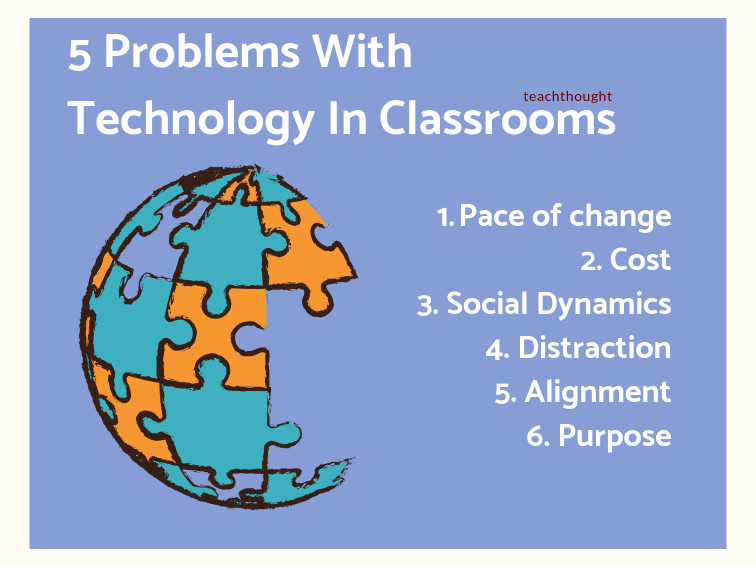
What Are The Main Problems With Technology In Classrooms?
The main argument for technology in the classroom is that emerging students should be able to apply classroom concepts to daily life, and a large part of daily life revolves around technology.
Students today are apt at using technology, and tools such as laptops, smartphones, and tablets are already second nature to them. Taking technology out of the learning equation would be removing an integral part of the students’ abilities.
Likewise, even if the student isn’t already technology-savvy, that’s even more of a reason to embrace the skill. Understanding technology is becoming more and more important in the workplace and other areas; competing with peers in the 21st-century simply necessitates the need for technological finesse. But problems with technology can be a source of challenges for schools as well.
See also How Rapid Technology Change Impacts Your Teaching
1. Pace of change & cost
It’s not easy for schools to keep up with the rapidly changing technology.
While many have quietly accepted purchasing a new $800+ smartphone every two years as a part of life, schools doing anything close to the same represents a major financial investment. Further, purchasing the hardware is only the beginning of the investment. Curriculum, assessment, and instruction must all work together with the hardware to leverage its potential. (See #4.) This, of course, requires considerable planning and design thinking–and ongoing training for teachers.
2. Different social dynamics
Technology adds complexity to everything–support, teaching, learning, budgets, etc. It’s inherently ‘disruptive.’
Take for example the added social dynamics of modern technology. Privacy, footprint, and digital citizenship are all as important as the content being learned and how learning is being measured. Even entirely new approaches like eLearning don’t offer the same social benefits of a regular school. Without a classroom where students can form friendships and relationships with their peers, they may not learn the same social cues as regular students. Without any real face-to-face time with their teacher, they may take the classes less seriously.
3. Limited perceived effectiveness of technology
This is not to say that technology isn’t effective. It’s difficult to say if chalk is ‘effective’ or graphing calculators are ‘effective’ or if that computer lab is ‘effective’ because it’s not always clear how we’re measuring that effectiveness. How do we know when something works in education? If this isn’t accurate, precise, transparent, and communicated among all shareholders in a school or community, it will be difficult to know if the technology is ‘working.’ (See #5.)
4. Lack of alignment between technology, curriculum, and instruction
There are also discrepancies as to how much of a crutch technology can be to a student. Schools once debated whether or not certain types of calculators should be allowed in class, as they essentially solved the problems for students that struggled with math. The same may be true for apps that supply quick, accessible answers for problems that a student should actually be thinking about in greater depth. (Ed note: This is also an issue of instructional design than an argument against technology, but it does underscore the need for revised instructional design in light of technology.)
5. Lack of clarity about the purpose of ‘school’
The New York Times article “In Classroom of Future, Stagnant Scores,” discusses a school in the Kyrene School District that has fully implemented technology in the classroom. Since 2005, the school has invested around $33 million in technology, par a passing vote. Children use laptops and tablets for their work and integrate things like Facebook groups into regular projects. Unfortunately, the school is also suffering from low standardized test scores. (Ed note: unfortunately, it seems entirely plausible that test scores and actual learning may not be as tethered as we’d like.)
While statewide test scores have risen, Kyrene School District remains stagnant in the face of all of its innovation. Teachers worry that while the technology is engaging on a creative level, the students may be missing out on basic concepts like math and language. Other proponents of technology point out that standardized test scores may not be the best gauge of student intelligence and creativity. Still others yet reason that there’s no reason to spend millions of well-earned tax dollars on a system before knowing whether or not it is sincerely helpful for educational growth.
problems with technology
